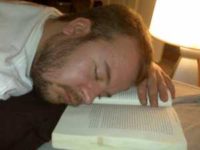12 Apr Night Owls Risk Dying Early
MedicalResearch.com Interview with:
 Kristen L. Knutson, PhD
Kristen L. Knutson, PhD
Associate Professor
Center for Circadian and Sleep Medicine
Department of Neurology
Northwestern University Feinberg School of Medicine
Chicago, IL 60611
MedicalResearch.com: What is the background for this study? What are the main findings?
Response: Previous research has shown that “night owls” (people who prefer the evening) have higher rates of diseases such as diabetes or high blood pressure. We wanted to determine whether mortality risk was also higher in night owls. We used data from the UK Biobank of almost a half million people who were asked whether they were morning or evening types.
We found that the night owls had a 10% increased risk of dying over a 6 ½ year period compared to the morning types, even after taking into account existing health problems.
MedicalResearch.com: What should readers take away from your report?
Response: It is important for night owls to recognize that being a night owl could have serious consequences for their health. They may need to be particularly vigilant about maintaining a healthy lifestyle. There is hope but it will take some effort.
Some strategies for night lows include going to bed a little earlier each night to move out of the “night owl zone”. Once they achieve an earlier bedtime they should maintain a regular schedule and avoid shifting later on weekends or free days because then you’ll be drifting back into night owl habits. We believe that regularity in your schedule is important. They should also avoid light at night, and this includes not staring you’re your smartphone or tablets before bed.
MedicalResearch.com: What recommendations do you have for future research as a result of this work?
Response: We need to identify why night owls are at increased risk of dying and, more importantly, what can we do about it. We need to determine what interventions work best at improving the health and well-being of night owls.
No disclosures
Citations:
Kristen L. Knutson, Malcolm von Schantz. Associations between chronotype, morbidity and mortality in the UK Biobank cohort. Chronobiology International, 2018; 1 DOI: 1080/07420528.2018.1454458
[wysija_form id=”3″]
The information on MedicalResearch.com is provided for educational purposes only, and is in no way intended to diagnose, cure, or treat any medical or other condition. Always seek the advice of your physician or other qualified health and ask your doctor any questions you may have regarding a medical condition. In addition to all other limitations and disclaimers in this agreement, service provider and its third party providers disclaim any liability or loss in connection with the content provided on this website.
Last Updated on April 12, 2018 by Marie Benz MD FAAD
